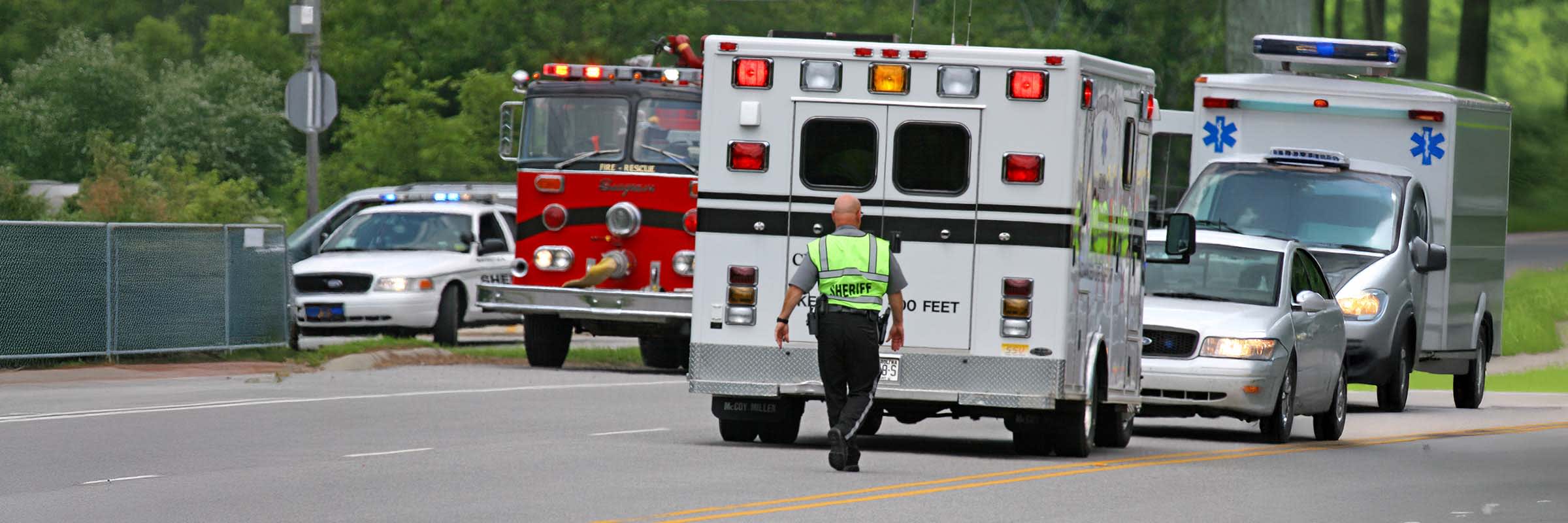Breaking barriers: how interoperability is uniting public safety agencies in times of crisis

Few jobs are more vital than those carried out by police officers, paramedics, firefighters and other public safety personnel. In a time where storms, wildfires, and other disasters are not only more frequent but increasingly destructive, these frontline heroes face mounting pressure to respond faster and more efficiently than ever. However, their ability to communicate and coordinate across agencies can often be hampered by outdated or incompatible systems. In critical moments, these gaps in communication can mean the difference between life and death. That’s why investing in a robust network and devices that enable seamless interoperability is no longer optional, it’s essential. By simplifying communication across public safety agencies, regardless of the situation, interoperability ensures that help arrives where it’s needed most, when it’s needed most.
The interoperability challenge for public safety
During a wildfire or other major event, first responders often require reinforcements from civic, regional, provincial and federal jurisdictions. Today, however, there is no guarantee that each team’s equipment, systems and devices can interoperate leading to potential delays in communication. Here lies an opportunity: enable interoperability to help different agencies coordinate and collaborate more effectively, accelerating emergency response times and streamlining recovery efforts.
But there are challenges to address before that can happen. For instance, there is no requirement for regional agencies to use a common mobile carrier, which can make it difficult to work with partner agencies on different networks. Without a common carrier, any national-level public safety network will be fragmented. Configurations, such as network timers and device behaviours, can also differ between vendors. Additionally, complex implementations can lead to service interruptions or other issues when personnel roam outside their carrier’s local coverage area or try to connect with users on different systems. Due to a lack of interoperability, some users must carry both a traditional radio and a smartphone to access Push-to-Talk (PTT) and Land Mobile Radio (LMR) networks.
Many public safety agencies in Canada haven’t had the ability to harmonize operations, leading to them to work in silos. Each agency may have its own language or terminology it uses during emergency responses, which can hinder communication when working with external teams. Contributing to this issue is the lack of national standards in Canada to support interoperability. Without national standards, there’s no way to ensure all public safety personnel receive similar training and education, which would facilitate improved collaboration between agencies.
How Bell can help bring public safety agencies together
The first step to empowering public safety agencies to work better together is to provide the network and technology foundation. At Bell, we are developing an integrated communications platform that can connect teams, whether they’re using an LMR handset or a mission-critical PTT solution, powered by Canada’s largest LTE network. This way, first responders would only need to carry a single device with them on the job, while dispatchers can ensure personnel receive information no matter the device they are using. All Bell solutions are compliant with North American APCO-25 standards, enabling agencies to integrate multiple LMR networks. With rigorous device testing and certification, public safety agencies have access to a wider selection without sacrificing interoperability.
Our radio over IP (RoIP) solution provides a streamlined path to LMR and PTT interoperability. It offers enhanced security and resilience compared to the public Internet by utilizing a dedicated access point name (APN). This dedicated APN minimizes latency, jitter and packet drops, resulting in improved performance.
Finally, we can provide immediate and national scale, which isn’t possible with regional service delivery models. Supported by extensive knowledge of low-band implementation in specific geographical areas, we can quickly deploy network-wide band 14, the frequency band reserved by the Government of Canada for public safety communications or scale the deployment as needed.
Why Bell for public safety?
With over 30 years of public safety expertise, Bell is an established leader in mission-critical communications solutions. Our comprehensive suite of technologies, including P25 LMR, Push-to-Talk (PTT), Mobile Broadband for First Responders (MBFR), interoperability, Next Generation 911 (NG911) and SD-WAN enables us to support communications across several public safety agencies. This flexibility in terms of solutions uniquely positions Bell to meet the demands necessary to deliver a PSBN.
Our approach to public safety communication is holistic, leveraging an ever-growing and expansive partner ecosystem to deliver innovative, interoperable solutions. With the capability to design, deploy and maintain P25 LMR and PMN – as well as integrate advanced Internet of Things (IoT) and Internet of Life Saving Things solutions – our goal is to improve the situational awareness and safety of first responders on the scene. Beyond the technology, Bell will provide the end-to-end professional services necessary to maintain networks tailored to the unique needs of the region or agency. Our unmatched suite of solutions, technical expertise, infrastructure and advanced partnerships go hand in hand with our commitment to innovation, security and connectivity, ensuring we deliver a world-class PSBN and best-in-class solutions to enhance public safety operations nationwide.
Partnering for public safety
Interoperability between LMR and PTT solutions would make it easier for first responders and public safety personnel from different agencies to work together when circumstances demand. When every second counts, interoperable solutions could give emergency personnel the upper hand in disaster management.
The next article in this series looks at how other technology innovations can support the important work of public safety agencies, including Next Generation 911, augmented reality (AR), drones and the Internet of Things (IoT).
For more than three decades, Bell has worked as a technology partner to public safety agencies across the country. We’re committed to continuing that support, developing and delivering the solutions and providing the expertise that first responders and other public safety personnel need to do their important work. Visit bell.ca/publicsafety for more information.